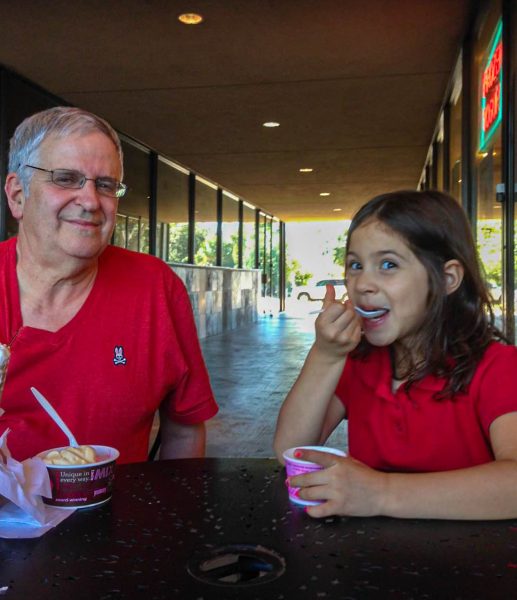Joining forces: A look into the APUSH team teaching style
Edaburn has her students sign in for attendance and pick up work at her desk in the front. Grace Srouji sits at a table outside the door to greet students and take attendance for her students.
Lengthy exams, piles of homework and an expectation to study hard. AP classes are no joke. With that, though, comes college credits and an improved work ethic.
However, AP US History prepares students for something else: team teaching.
Rather than three separate classes and one teacher for each, the APUSH teachers teach all of their classes with at least two teachers in a single room, the LGI. Jared Manuel, Patricia Edaburn and Grace Srouji have been doing this together beginning just this year, though the method itself has been in place since the 2020-21 school year.
They thought team teaching would be an ideal alternative to a regular classroom setting, one that would better engage their students in the lesson.
“One of the things we thought would be more interesting for our students is if I’m talking and Ms. Srouji starts to talk,” Edaburn said. “Then it’s a different voice that wakes you up. All of us have a different perspective.”

Edaburn also emphasized the importance of trying something different during the pandemic, saying the team teaching method was especially helpful in Microsoft Teams meetings. Even after online learning came to a close, the teachers thought it was so beneficial for the students that it was worth keeping it as a permanent part of the class.
It benefited the students by making the class different from others, which created a newer, more interesting atmosphere. Also, having multiple teachers at once was helpful to give the students a look into multiple ways of thinking.
Junior Grace Cruz seems to have the same opinion.
“I think that it helps me because, for me, I have trouble focusing and I get distracted very easily,” Cruz said. “Listening to two of them helps me not get bored.”
Cruz is just one APUSH student who enjoys the unique style of learning. But some, like junior Kathleen Molineu, are on the opposite side of the spectrum.
“I find it helpful sometimes, but other times I find that it can be a little bit overwhelming and confusing,” Molineu said.
Cruz and Molineu make it clear that team teaching has its positives and negatives. However, Edaburn also said the teachers put it into place so that the students would get the very best quality of information from each of them.
“It allows everybody to do what they like best and I think you do a better job if you’re doing something that you’re pretty passionate about,” Edaburn said, addressing how the team teaching style lets each teacher cover what they’re best at.

Manuel is best at politics while Edaburn is better at the social aspects. These specialties make their teaching styles very different, which is one reason teens taking the course find the method hard to adjust to.
“One teacher is going to be hands-on while the other teacher will just tell us to write down the notes and that’s it,” junior Miles Newman said.
Despite their different approaches to teaching and the differing opinions of the students, it looks like team teaching is here to stay. Edaburn said that she has worked well with Manuel and Srouji from day one.
“The three of us just meshed together and I think we complement each other,” Edaburn said.“Some of us have strengths in one area, while others have strengths in another area and it really meshes together.”
Your donation will support the student journalists of Bellaire High School. Your contribution will allow us to purchase equipment and cover our annual website hosting costs.








Nabila Wilson • Dec 16, 2022 at 2:10 pm
I really enjoyed having everyone because I got a lot of different perspectives!
Andrew Liu • Dec 14, 2022 at 2:32 pm
Pretty cool how APUSH is the only subject where team teaching is happening. It would be interesting if this style of teaching spread to other subjects.